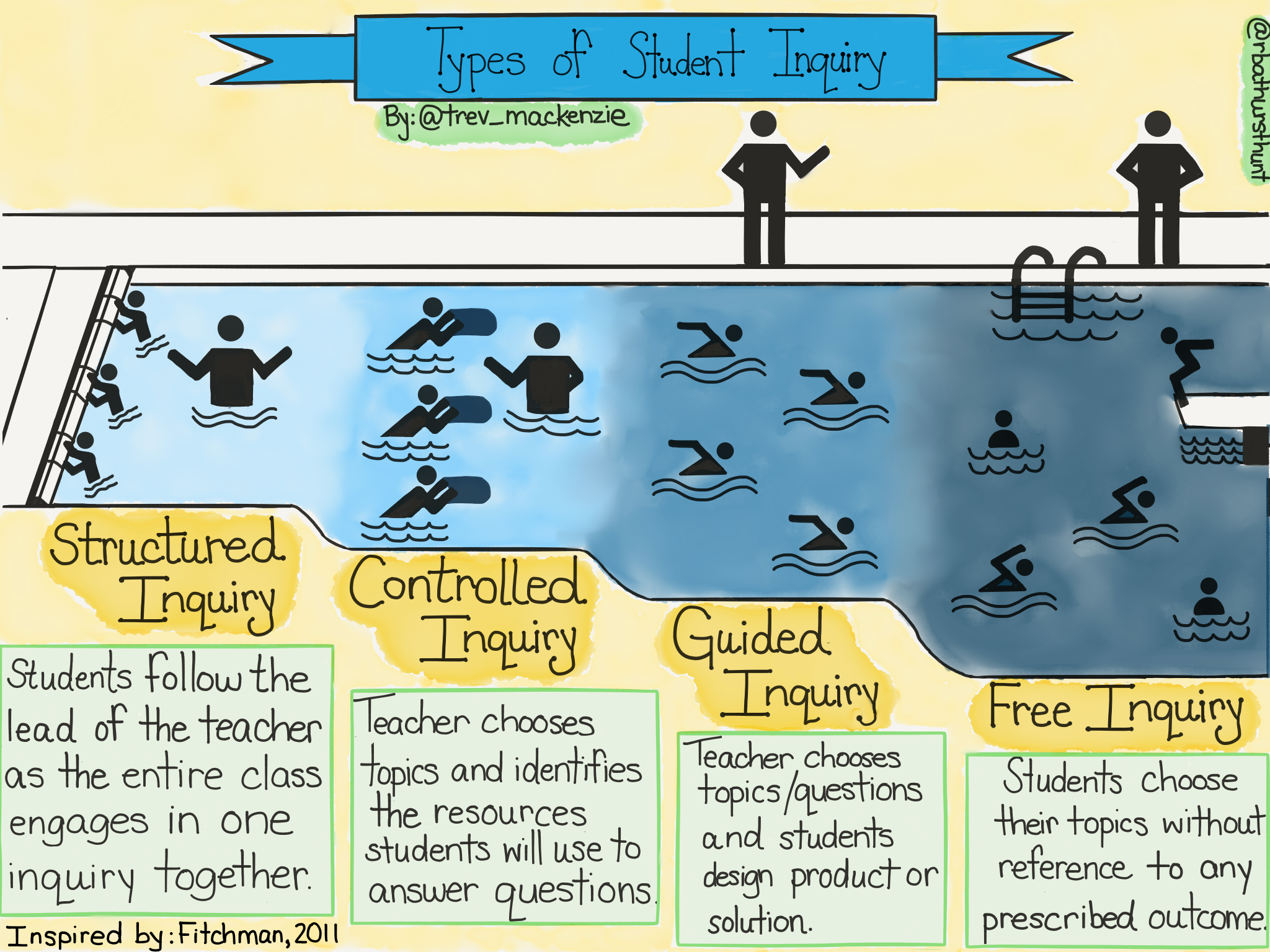
I like how the author of Dive into Inquiry presents a model of different levels of inquiry, from very structured teacher led examples to free inquiry, where students have much more control. I appreciate that he does not expect that all learning should be at the free inquiry end of the spectrum, but instead explores how the other levels of inquiry are necessary to provide students with the tools and comfort to be ready for more open ended work. He also gives lots of ideas for how teachers can jump right in and experiment with inquiry based learning. —Kathy Johnson, Upper School, Dean of Teaching & Learning and Upper School Math Teacher
Dive Into Inquiry's 'handbook' format is most readable and useful. Its sections and links, which include lesson examples, provide a clear map of the continuum of the types of inquiry based learning, making the process of shifting curriculum approaches feel right, efficient, and logical. —Martha Richardson, Hamilton School. 8th Grade Teacher
Inquiry Mindset is a how-to guide for teachers to gain insight into different types of inquiry based learning that can readily be put into practice. It is an easy read filled with ideas that will inspire teachers to rethink traditional teaching methods and engage students in active learning experiences by posing questions and investigating answers. —Michelle Dolan, Lower School Nursery Teacher
There is a bit of theory in Trevor Mackenzie's book but what makes this a valuable resource is his relatable narrative about his classroom journey from structured to open inquiry. He combines appealing visuals and practical ideas to help answer teacher questions and wonderings about how to establish a "culture of inquiry" in their classroom. —Christine Smith, Middle School Librarian and Library Department Head
Author Trevor MacKenzie divides student inquiry work into four types based on how much scaffolding teacher provide to students. Take a look at the four Types of Student Inquiry shown:

Mark passages with symbols or colored post-its...
What project or idea in the book most excites you?
Think about connecting to others
Bigger questions

Using Trevor MacKenzie's Four Pillars of Inquiry above as a guide, go to our summer reading LiveBinder online resources. (Click here)
Browse the binder by clicking on the various tabs and subtabs.
Find TWO resources in the binder that really speak to you:
Be prepared to share about what you found in the binder that resonated with you when we meet in small groups at our opening meeting.
Special thanks to Alyssa Mroz for creating these questions.
 Using Trevor MacKenzie's Four Pillars of Inquiry as a guide, browse our summer reading LiveBinder resources (below) by clicking on the various tabs and subtabs.
Using Trevor MacKenzie's Four Pillars of Inquiry as a guide, browse our summer reading LiveBinder resources (below) by clicking on the various tabs and subtabs.
Find TWO resources in the binder that really speak to you:
Be prepared to share about what you found in the binder that resonated with you when we meet in small groups at our opening meeting.